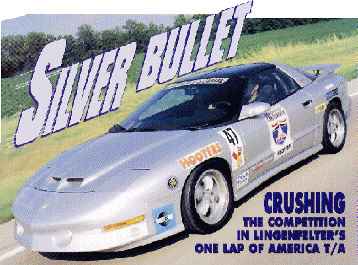

By Evan J. Smith
Photos by Richard A. Lentinello and the author.
*Republished from and with the permission of High Performance Pontiac magazine. All rights reserved.*
We all knew about the beast before we'd ever laid eyes on it. We knew the color
and the story, but had no idea what it would feel like when it was wrapped around our hide.
| We knew this supercar was a killer, and now we'd have a chance to drive it. We're talking
about the mean and nasty LT1 Trans Am that is owned jointly by Lingenfelter Performance Engineering and Pontiac
Motor Division. The car was given to Lingenfelter by Pontiac so it could be turned into a fire-breathing road-burner,
one that could score big in the One Lap of America race that's held once each year. The OLA event encompasses a week's worth of driving -- 4,100 miles, to be exact -- with stops at 11 different road courses along the way. Cars running in the event are classified by vehicle price and there were 85 entrants for the 1995 running. Entries included BMW M3s, 1996 Porsche 911 Turbos, LT1 Corvettes, ZR-1s and more. The competition is fierce and very tough, but the technicians at Lingenfelter were ready for the challenge. |
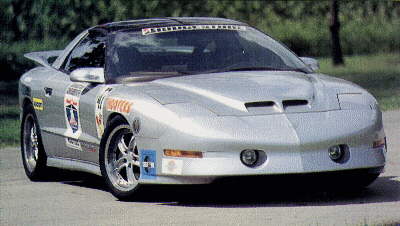 |
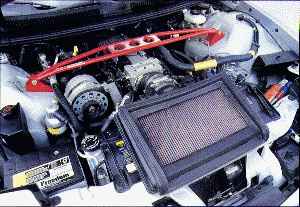 |
Upholding Pontiac's honor is this 1995 Trans Am that can show its taillights to just
about anything on a road course or drag strip. It was prepared by John Lingenfelter and his competent crew, at
his shop in Decatur, IN. The T/A is fully loaded with the hot LT1 under the hood (and the dash) and it's also equipped
with the Borg-Warner 6-speed, T-tops and the new-fo-'96 Ram Air induction system. Lingenfelter knew he'd have to jack up the performance of the T/A if he was to take on the likes of Porsche Turbos and M5 Bimmers. Modifications began under the hood. The factory 305-horse LT1 was dropped out and taken to a special place where only a few are allowed. It was disassembled and then rebuilt with that special Lingenfelter touch. |
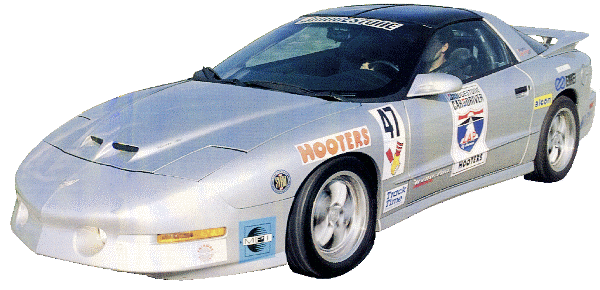
| During the next few races the team experimented with brake pads, suspension bump stops and strut/shock tuning. They even found a late night alignment shop where they dialed in the maximum camber and caster allowed. Then they adjusted the toe-in, and the handling was improved. Total road miles were counted at 2,370 and the next morning they faced Atlanta Motor Speedway. The Atlanta course features high-banked oval and tight infield turns, and the LPE Bird loved it. The Trans Am was really hugging the corners, which helped Goad to finish in third place. | 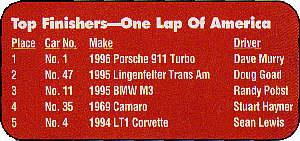 |